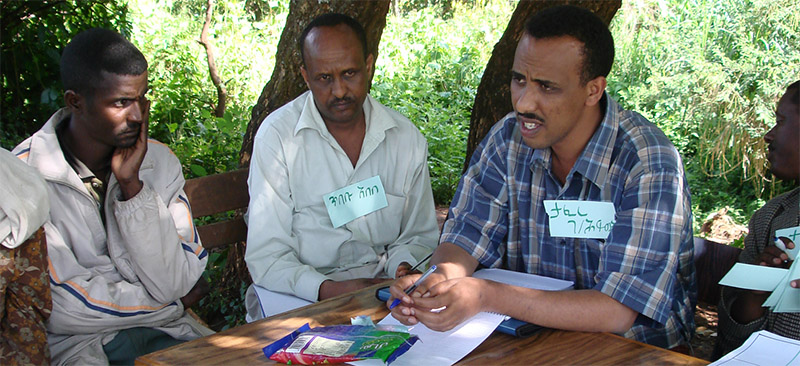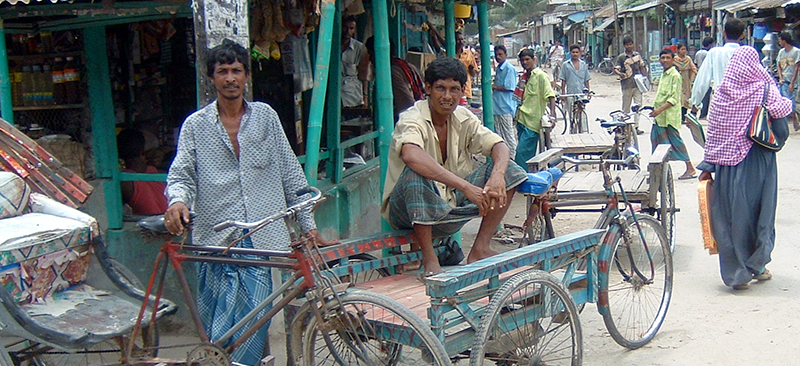With the exponential growth of the microfinance sector in India, there is increasing realisation of the need to address the aspect of (lack of) sufficient capacity building and assistance in order to manage this growth.This study focuses on the training and capacity building requirements among low income financial services providers in India. It also examines and assesses the potential capacity development institutions, training courses/toolkits and other resources available in India.The study categorises MFIs on the basis of their age and institution type and prioritises the training focus areas accordingly. It recommends the users in careful selection of priority training areas; selecting synergetic training courses; adopting adult learning best practices; developing comprehensive and easy to use training packages; and working with stakeholders to develop a national curriculum for microfinance in India besides regional centres of training.
Blog
“Market Research for MicroFinance” – 7 Cautions and a Recommendation
The origins of the MicroSave “Market Research for MicroFinance” (MR4MF) approach to product development lies in the belief that a market-led financial institution must assess its clients’ needs. The MR4MF approach requires careful planning and technical skills. This note outlines the complexities and challenges associated with market research and lists seven cautions, which should be kept in mind while undertaking a research. MR4MF is used for a wide variety of application, which is discussed in the note. In order to get the best of the MR4MF approach, training is essential. An overview of the MR4MF training given by MicroSave is also outlined in the note.
Designing Innovative Products, Processes and Channels for the Promotion of Microfinance
The microfinance industry has traditionally seen poor people’s needs for financial services only as “credit for enterprise”. However, due to their various life cycle needs, low income clients need a range of “financial services” and not just the traditional mono-product of working capital loan. In response to this emerging need of the sector, growing numbers of financial institutions are developing and delivering a range of financial services customised to cater to client needs. This paper examines some of the products designed (many in collaboration with MicroSave) as a respond to these needs, as well as some of the innovative delivery processes currently under testing. It also reviews the MicroSave approach to product design. It concludes with comments on NABARD’s Kisan Credit Card and implications of the changing face of microfinance for the “massification” of financial services for the low income market in India.
Designing innovative products, processes, and channels to promote microfinance
The microfinance industry has traditionally seen poor people’s needs for financial services only as “credit for enterprise”. However, due to their various life cycle needs, low income clients need a range of “financial services” and not just the traditional mono-product of working capital loan.
In response to this emerging need of the sector, growing numbers of financial institutions are developing and delivering a range of financial services customised to cater to client needs.
This paper examines some of the products designed (many in collaboration with MicroSave) as a respond to these needs, as well as some of the innovative delivery processes currently under testing. It also reviews the MicroSave approach to product design. It concludes with comments on NABARD’s Kisan Credit Card and implications of the changing face of microfinance for the “massification” of financial services for the low income market in India.
Financial Performance
Grameen Bank’s audited accounts for 2003 show a six-fold increase in net profits over 2002 – from 60 to 358 million taka (US$6 million). 2003 was the first full year of ‘Grameen II’, so this surge in profit looks like a good return on the decision to launch Grameen II. So where did these profits come from? This Briefing Note attempts to answer that question and the implications for Grameen’s future performance.
Market Research for Microfinance: Beyond Product Development
MicroSave’s Market Research for MicroFinance Tools have been widely used for product development and refinement. However, increasingly the tools have been used to address diverse institutional needs. This note outlines five of the new uses to which the tools have been put. These include – image analysis, customer service, feedback loop analysis, product marketing and financial education. The note suggests that the diverse ways in which the Market Research for MicroFinance toolkit has been used reflects the flexibility and potential of the tools and the creativity of their users.




